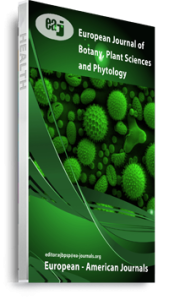Majority of Africans today depend either totally or partially on medicinal plants for the healing of their ailments which was used by their ancestors. This form of treatment, which is referred to as ethno medicine is sometimes the only kind of health care available to the rural populations. As part of the efforts to ascertain the healing capability credited to Moringa oleifera by the general public and some traditional practitioners, this work aimed at determining the antibacterial potentials and phyto-chemical constituents of M. oleifera was embarked on. Aqueous and ethanol extracts of fresh and dried leaf of Moringa oleifera (FMLE, FMLDW and DMLE, DMLDW) were obtained using a standard method (1). The antibacterial efficacy of aqueous and ethanol extracts of fresh and dried leaves of Moringa oleifera was tested against Staphylococcus aureus , Streptococcus pyogenes, Escherichia coli, Pseudomonas aeruginosa and Salmonella typhi, isolated from wound and feaces respectively, to ascertain its effectiveness in the treatment of wound infection and typhoid fever using Agar diffusion by punch method. The minimum inhibitory concentration (MIC), minimum bactericidal concentration (MBC) and phyto-chemistry of the extracts were also evaluated. The mean values of zones of inhibition obtained were statistically analyzed using ANOVA. The least significant difference was determined according to LSD test at P ≤ 0.05. Results obtained showed that FMLE at 500mg/ml has the highest zone of inhibition of 22.00b against S. aureus, E. coli and lowest 15.00b against S.typhi, compared with DMLE with the highest zone of inhibition of 20.00b against S. pyogenes and lowest of 10.00b against S. aureus. FMLDW presented the highest inhibitory activity 28.00b against S. pyogenes and no activity against S. aureus and P. aeruginosa while DMLDW recorded 20.00b P. earuginosa and 10.00b against S. pyogenes. Both the aqueous and the ethanol extracts of Moringa oleifera leave exhibited appreciable level of inhibition against the test bacteria, but the aqueous extracts were not as effective as the ethanolic extracts. Phyto-chemical analysis of aqueous and ethanol extracts of fresh and dried leaf of Moringa oleifera revealed the presence of alkaloids, saponin, flavonoids and tannins. The findings from this work could be of interest and suggest the need for further investigations in terms of toxicological studies and purification of active components with a view to using the plant in novel drug development.
Keywords: Aqueous, Ethanol Extracts, Moringa oliefera, Pathogenic Bacteria, Toxicology., leaves, phytochemicals

